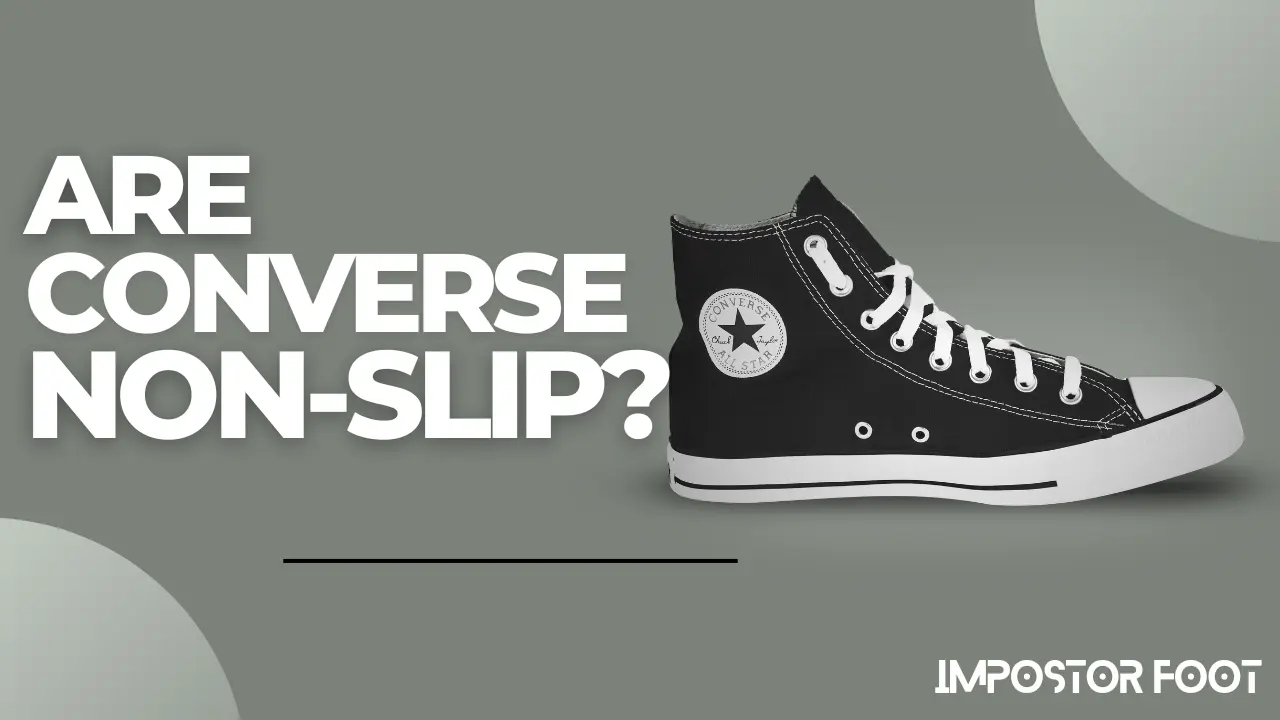
Converse is a go-to brand for a lot of budget-conscious shoe lovers. And since so many people wear and love them, it’s no surprise they’ve got questions about how their shoes actually go with your daily lifestyle.
One question I get asked pretty often is whether Converse shoes hold up well on slippery surfaces. Are Converse shoes non-slip by any chance?
Well, let’s get into it and quickly cover this question for my lovely readers!
Contents
Are Converse Shoes Non-slip?
No, not really, to be honest.
Some Converse models (Converse Shai 001, Converse Chuck 70 High Top, etc) might have a bit of better tread and slight slip resistance, but most of their shoes just aren’t built for slippery surfaces.
When they’re brand new, the outsoles might grip decently at first, but once that tread starts to wear down, they get a lot more slippery than you’d expect.
And in places where you’re dealing with oil, grease, or food on the floor, that stuff will coat the soles and make things worse. So, if you’re thinking of wearing Converse in such places, just don’t. They’re not made for that and they’ll get ruined fast, and might cause rapid fatigue while normal walking.
Converse are style sneakers. That’s it.
If you actually need slip-resistant footwear, I’d recommend looking into work-specific options. Treadsafe, for example. Brands like Dr. Martens, Red Wing, or even Blundstones give you solid grip and durability.
And if you want something more sneaker-like, check out the Hoka Bondi SR, certain New Balance running shoes, or even some of the better Skechers models. They’ll do the job much better than Converse ever could.
How to Choose the Right Non Slip Shoes?
That’s actually an even bigger question right now. But no worries, I’ll let you know a few things you should look for when buying non-slip shoes.
To buy a shoe with slip-resistance you are going to have to look for a few things. Here’s what you need to check.
Start with the outsole. Good non-slip shoes usually use softer rubber. That softer rubber grips the ground better, especially on tile or wet floors.
Then you’ve got the tread pattern. A proper slip-resistant shoe will have a special tread design that channels away water, oil, or anything slippery. It helps the sole stay in contact with the surface instead of sliding out from under you. A lot of the good ones use circular or multi-directional (Diamond) patterns for traction from different angles.
Some soles are even treated to resist grease and oils, which is a super nice thing to have. It keeps your shoes from turning into a slip hazard after just one step through a messy spot.
The shape of the shoe also matters. A wider, flatter base gives more contact with the ground and better stability.
And here’s a little tip—real OG slip-resistant shoes are usually tested under standards like ASTM or SATRA. If a shoe claims to be non-slip but doesn’t mention any kind of testing or certification, chances are it’s just a regular sneaker.
So yeah, keep an eye out for these features if you want actual slip resistance.
How Can You Make Your Converse Shoes Non-Slip?
Now, what if you’ve got a solid pair of Converse like the regular Chucks. And they just don’t hold up well on wet or slippery surfaces?
In that case, one of the easiest things you can try is adding a non-slip or anti-slip sticker to the bottom. It won’t turn them into proper work shoes, but it can help with traction and give you a bit more grip on smooth floors.
I have personally tested this myself. I’ve seen this work really well—especially on freshly polished tiles at home. In my personal experience, the stickers stick well to the outsole and do a decent job of keeping your feet stable on slick tiles.
Alongside that, I actually tried using a non-slip spray and it wasn’t that great. It wore off pretty quickly, and you have to keep reapplying it just to maintain some grip. Compared to the sticker, it’s definitely not the better fix if you ask me.
In fact, both options (the spray and the sticker) are just quick, temporary fixes if you’re looking to get a little more traction out of your Converse. But if you’re after a permanent solution, your best bet is to move on to a proper slip-resistant shoe.
Final Words!
Even though a lot of websites claim that Converse shoes are grippy enough for slippery surfaces. Little do they know that after about 7 months of constant use, the rubber soles wear out and get slippery as hell.
I’ve been wearing Converse for around 8 years now, and even though I mostly wear them just for casual stuff, I’ve had a few slip moments myself on rainy sidewalks. Thankfully, I didn’t fall, but I definitely felt that lack of grip. I’ve also noticed some slipping on my polished tile floors at home. So at the end of the day, I came to one conclusion—these things just don’t grip.
Non-slip stickers and sprays are quick fixes but they only work for a while.
So, for any of my readers thinking about wearing Converse in industrial areas, or anywhere with greasy, oily, or wet floors—I’d say skip them.
It’s not that Converse are bad shoes, some models like the Japanese Chuck 100s or Converse Shai 001 actually have decent traction due to their better soles. But still, for your own safety, you’re better off going with shoes that are actually rated for work environments.
Health and safety first.



